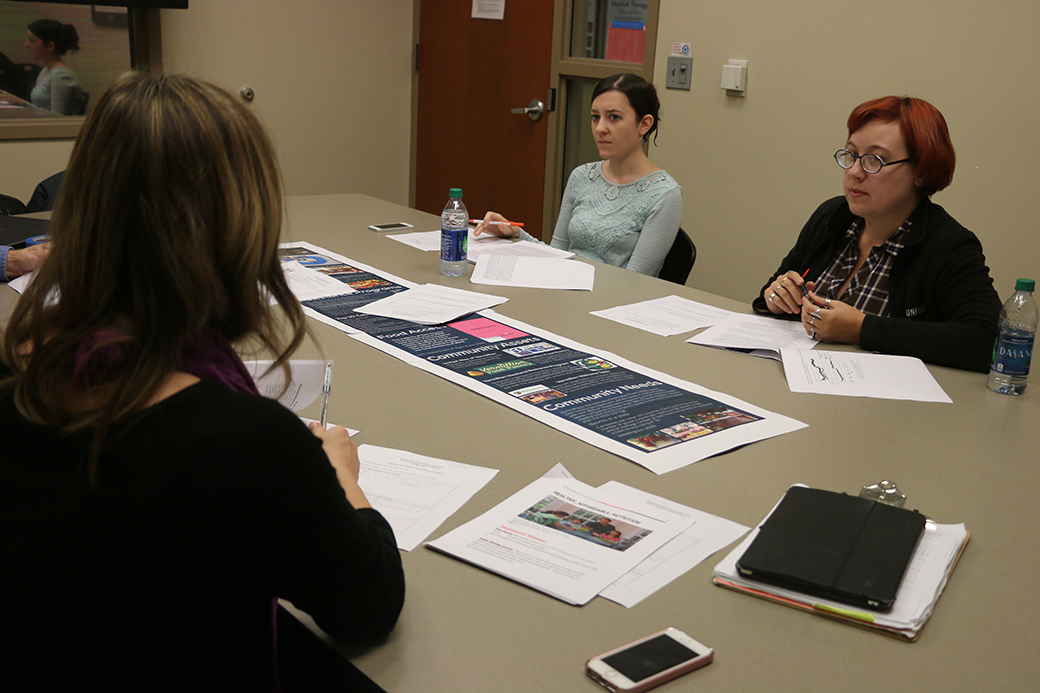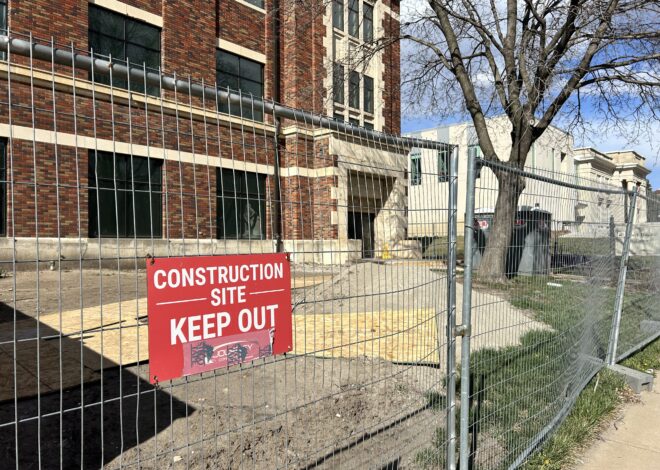
Graduate students working to improve food security in Vermillion
One graduate course is enlisting the ideas of students from across the country to combat food insecurity in Clay County.
Social and Behavioral Sciences in Public Health, a required course in the Master of Public Health Program (MPH), is an online course that studies how social determinants of health influence health outcomes, USD instructor Chelsea Wesner said.
The course’s seven groups are each developing a proposal to improve the efforts of nonprofits in Clay County — which has a food insecurity rate of 16.8 percent, according to FeedingAmerica.org.
The groups are pitching their ideas to Feeding Vermillion, a collection of multiple local nonprofits such as the Vermillion Food Pantry, the Vermillion Weekend Backpack program and the Welcome Table.
Wesner said while most local organizations are focused on “feeding the line,” her students will be working on solutions to shorten the line.
“In public health we kind of take a step back and say, ‘Well how can we prevent this from happening in the first place?’” she said.
Wesner said she believes the process has been both challenging and rewarding for the student groups.
“I think coming together they’re beginning to see how much they’re contributing to a real issue,” she said.
Trial and error
After graduating from USD in 2012, Colette Free has been working as a research associate in Sioux Falls. She said she came across the MPH program while she was deciding what she wanted to do next in her career.
“This is my first semester in the program and so it basically is giving me a good perspective on where South Dakota is at in terms of poverty levels and nutrition and stuff like that,” she said. “It’s really been a great learning experience.”
As an undergraduate student, Free said she was unaware that Clay County had such high poverty and food insecurity rates.
The course has been “eye-opening,” she said.
Each group is required to work from the social ecological model of health, Wesner said.
This framework encompasses five levels: individual, family, organizational, community and policy. Recommendations have to be provided for each level.
“What that basically does is it addresses the five levels that kind of surround a person,” Free said.
One example of an idea Free’s group put forward is the concept of food prescriptions. Free said the idea came from a group member who lives in Detroit.
“He basically prescribes fruits and vegetables and then that way these people who don’t have access to them can take them to a farmer’s market or a grocery store and then get those things like you would a prescription,” she said.
Adriann Pidek, another student in the class, said her group took more of an educational approach. One of their suggestions was to implement a program similar to one in Denver, where Pidek lives, called Cooking Matters.
Pidek said Cooking Matters provides nutrition education, cooking classes and more to help families who receive nutrition assistance dollars to make healthy yet inexpensive choices in order to get the most out of their assistance.
The program also provides incentives like free kitchen supplies and ingredients, Pidek added.
“It’s a great program,” she said.
Pidek graduated from the University of Northern Colorado in 2004. Since then, she’s been working at a hospital in Denver.
She said her work as a registered dietitian can sometimes be disheartening, because by the time she gets to see patients, they’re often in very poor health condition.
“A lot of these things could have been prevented or managed better,” she said. “And so I feel like I would like to work in an area that’s more proactive instead of reactive. And I’d like to do more health education and promotion
for communities.”
Pidek said when she graduates from the MPH program, she wants to do more work in obesity prevention and nutrition
health education.
Through her research for the class, Pidek said she’s learned of many useful resources that organizations in her community could take advantage of.
“I’d like to return this knowledge to the community,” she said.
Pidek said she appreciates the fact that their class is getting input from a variety of different perspectives, since its students are located all over the country.
“It’s nice to have this geographical variety,” she said.
Making a difference
On Oct. 19, Wesner, food pantry director Jessica McKenzie, executive director of the United Way in Vermillion Kelsey Collier-Wise and founder of Welcome Table and the backpack program John Lushbough met to go over the groups’ first drafts.
buy symbicort online https://drugeriemarket.co.uk/wp-content/languages/new/britain/symbicort.html no prescription
Collier-Wise said it’s been a very interesting process so far.
“Ultimately I could see a couple of these proposals being things that we might be able to try. So I look forward to that,” she said.
Lushbough said he thinks the students have come a long way in a short amount of time.
“I really think they’ve done really well overall,” he said. “I’m certainly impressed with how much they have found out about what goes on as far as feeding people, or as far as hunger is concerned in this community. So I’ve been impressed overall.”
Collier-Wise said this is a good exercise because it demonstrates that Feeding Vermillion is willing to work with USD and the students enrolled here in order to better the community.
“When we put student energies towards that kind of innovation we could come up with some really interesting things,” she said.



